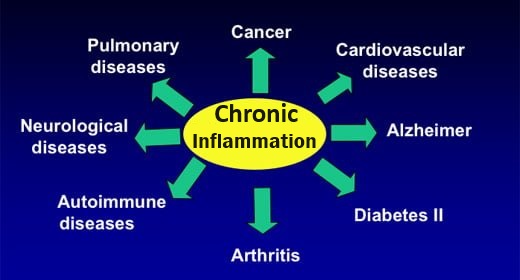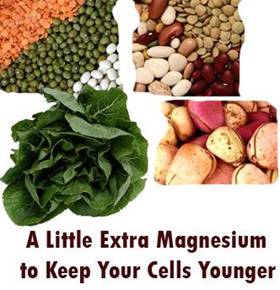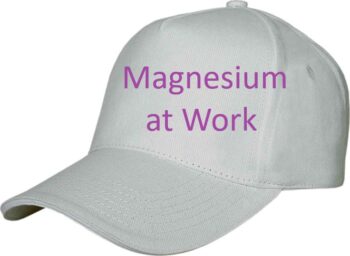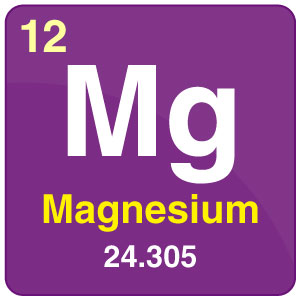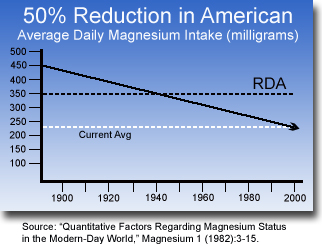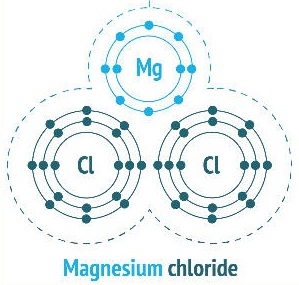How to boost magnesium intake?
Muscles, bone, immune system, nerve system and brain, will begin to change by boosting magnesium intake
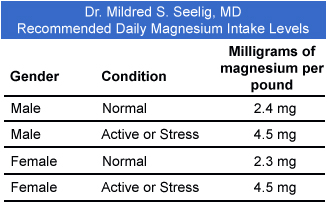

How much daily magnesium is needed?
Note that serum magnesium levels do not correlate to muscular or cellular magnesium levels. The body works to keep blood magnesium levels constant, containing ~1% of body’s total magnesium. Instead of trying difficult tissue magnesium analysis to find out if your health problems may be due to low magnesium levels, it is easier and more effective to simply intake more magnesium, in amounts that approximate healthy dietary levels and see what happens.
Guidelines for daily amounts of supplemental magnesium
The official Daily Value (DV) (Recommended intake/day) for magnesium is 420 mg a day for men and 320 mg a day for women, which should at least prevent severe deficiency. On average, American men are getting < 200 mg magnesium daily and women < 150 mg / day. If you then consider the current DV is less than half of the probable adequate amount, given all the diet, lifestyle and environmental factors depleting our ability to obtain magnesium, you can then grasp how significantly deficient we are in this vital mineral.
A supplemental magnesium intake of ~400-600mg / day is about right for most people. This in addition to dietary sources. 400mg / day as a maintenance dose, and 600 mg / day when dealing with health problems. Considering typical diets, this is going to require some kind of supplement.
A more specific recommended daily magnesium intake (from both supplemental and food sources) is offered in the following chart:

A “Normal” person – is someone who is healthy, eats the right foods and does not lead a stressful lifestyle.
An “Active or Stress” person – is someone who:
- Participates in physical activity or sports;
- Leads a stressful lifestyle;
- Doesn’t eat healthy foods.
It is recommended that you take the “Active / Stress” amount with any signs of magnesium deficiency, for example:
- Diabetic;
- Perspiring in hot weather;
- A high carbohydrate consumer;
- In chronic pain;
- Suffering migraines;
- Dieting;
- Nursing mothers;
- Persons with chronic fatigue or fibromyalgia;
- If you have hypertension, heart disease, or high cholesterol / triglycerides;
- If you are repairing tissue damaged by arthritis.
Some examples of recommended amounts of supplemental magnesium
- 140 lb female leads a normal life – daily maintenance dose of magnesium is 140 lbs. x 2.3 mg = 322 mg. (Supplement 200 mg 1-2 times / day, depending on dietary magnesium intake)
- 120 lb female leads an “Active / Stress” lifestyle and weighs 120 pounds – daily maintenance dose of magnesium is 120 lbs x 4.5 mg = 540 mg. (supplement 200 mg 2-3 times/a day, depending on dietary Mg intake).
- 130 lb. Female, migraine headaches, insomnia, muscle tension/soreness – 130 lbs. x 4.5 mg =500-600 mg total intake per day (supplement 200 mg. 2-3 times/a day, depending on dietary Mg intake).
- 195 lb male, athlete in training, some injury with athletic performance – needs a total intake 500-880 mg (supplement 200 mg 3-4 times/a day depending on dietary Mg intake);
Let your body guide you
- How do you feel? Do you have energy? Are you flexible? Do you sleep well? Are you free from degenerative disease symptoms?
- Do not take more magnesium than you need
- Excess intake of magnesium usually produces diarrhea. It is difficult to reach toxic levels of magnesium, since the kidneys will eliminate the excess.
Note that people with chronic kidney failure must be especially careful because their kidneys have difficulty eliminating magnesium and a toxic buildup may occur.
- The U.S. recommended
- calcium to magnesium ratio is 2:1 In th typical U.S. diet this ratio is around 4:1. To correct a magnesium deficiency, it may be necessary to have a ratio of 1:1 for a few weeks using magnesium supplementation.
Although not as convenient as oral supplementation, you should supplement using transdermal magnesium chloride oil (can be as simple as rubbing a teaspoon of watery oil on your skin to obtain 600 mg magnesium) if any of the following situations apply:
- Those with a serious condition. This reasonably simply method enables higher daily doses to rapidly increase your magnesium stores, by by-passing the digestive system.
- Those who have digestive issues when taking oral magnesium. Diarrhea can be a problem for some people. If taking high doses, or if the magnesium form is not bioavailable, the body excretes the excess.
- Those who simply prefer this cheaper method.

Magnesium-rich foods
Obviously the most natural way to get your magnesium. Unfortunately, most of us do not eat enough of these foods to satisfy our body’s demands in today’s world. Also, these traditionally Magnesium-rich foods are likely lacking in magnesium content due to being grown in magnesium-depleted soils or as a consequence of cooking or processing methods.
Plants have an affinity for taking up certain mineral salts from the soil. With the aid of enzymes and soil-based microorganisms, plants take up what mineral salts the soil has to offer via their roots (in plants) and hyphae (in fungus). The minerals in these salts become complexed with the plant’s various carbohydrates, lipids, and proteins. And so, by consuming the plant or animals that have eaten these plants, we intake the various minerals necessary for our health.
The best food-sources of magnesium are:
- Crude Rice, Wheat, and Oat Brans – added to breads and breakfast cereals
- Dried Herbs
- Squash, Pumpkin, and Watermelon Seeds – snack or in salads
- Cocoa Powder (Dark Chocolate) – milk chocolate contains only ~25% of the magnesium content of dark chocolate
- Flax and Sesame Seeds / Sesame Butter (Tahini)
- Brazil Nuts
- Sunflower Seeds
- Nuts – Brazil nuts, almonds, cashews, pine nuts
- Molasses – substitute for refined sugar in cakes and breads
Poor magnesium food sources: include highly refined flours, tubers, fruits, fungi, and most fats and oils.
Best food sources of magnesium (DV = 420 mg) | |||||
| Food | ~mg | Food | ~mg | Food | ~mg |
| Protein: | |||||
| 4oz Halibut, sole, salmon | 120-140 | 1 C Whole milk | 25 | 1 T Spirulina (dried) | 14 |
| 4oz Tuna | 70 | ||||
| Grains/Brans: However, brans contain a high content of Phytic Acid -Malabsorption Agent | |||||
| ½ C Whole grains (rye, amaranth, quinoa, millet, barley, buckwheat, whole wheat bread) | 40-50 | 1 C Brown Rice | 84 | 1 T Wheat germ | 17 |
| ¼ C Crude rice bran | 130 | ¼ C Crude wheat bran | 88 | ¼ C Raw oat bran | 55 |
| ½ C cooked oats | 30 | ||||
| Nuts : | |||||
| 6 Brazil Nuts (30g) | 112 | 2 Tbsp.Almonds (raw) | 42 | Cashews (roasted), | 88 |
Pine Nuts (2Tbsp.) | 42 | 14 walnut halves | 45 | ||
| Seeds: | |||||
| 2 Tbsp. Squash or pumpkin seeds | 96 | 2 Tbsp. Flaxseed | 50 | 2 Tbsp. Sesame seeds | 63 |
| 2 Tbsp. Sunflower seeds | 58 | 2 Tbsp. Fennel | 50 | ||
| Beans (½ C cooked legumes): | |||||
| Kidney, navy, pinto beans, chick peas, black-eyed peas, baked beans, black | 40-60 | ||||
| Fruits / Vegetables: | |||||
| 1 med. banana | 30 | 1 med. baked potato with skin | 50 | ½ C boiled Brussels sprouts | 15 |
| ½ C boiled green peas | 30 | ½ C boiled spinach 1 C raw baby spinach leaves | 78 30 | ½ Californian Avocado ½ Florida Avocado | 35 52 |
| 1 Tbsp. Molasses | 48 | ½ C boiled beets ½ C steamed broccoli | 20 | 1 oz. (60) Raisins | 9 |
| 1 med. pink grapefruit | 20 | ||||
| Chocolate: | |||||
| 5oz milk chocolate bar w/almonds | 125 | 1 envelope of cocoa mix | 25 | 1 miniature choc. SPECIAL DARK | 3 |
| 1 square baking chocolate | 93 | 10 Peanut M&M’s | 15 | ||
| Herbs (1 Tbsp.): | |||||
| Dried Coriander | 14 | Chives | 13 | Spearmint | 12 |
| Sage, Basil | 8.5 | Dill | 7 | ||

Magnesium supplementation
Do you even need to supplement magnesium?
You may NOT need extra magnesium if:
- You are NOT consuming excessive amounts of calcium (in dairy foods or supplements)
- You regularly consume dark green leafy vegetables and dark chocolate.
- You DON’T live an overly stressful life, or drink excessive amounts of alcohol, tea, or coffee, or consume a lot of sugar
However, the reality is that most of the world is magnesium-deficient given the many factors (E.g. stress, caffeine, sugar, alcohol, diuretics) depleting what meager amount of magnesium we manage to obtain, it is wise to consider supplementing this vitally important mineral
Why are we magnesium-deficient? .
This questionaire can help determine if you are deficient in Mg.
The DIY methods of supplementation are (1) transdermal and (2) oral
In a clinical setting, magnesium may be given by intramuscular injection or as an intravenous drip.
- Magnesium chloride/sulphate at typically prescribed CLINICAL levels during pregnancy may be toxic to developing fetus – according to a study published in Cell Death and Disease: “Magnesium sulfate (MgSO4) has been used in clinical obstetrics for over 70 years to treat pre-eclampsia/eclampsia and preterm labor, conditions that complicate approximately 3% and 12.4% of pregnancies, respectively, in the U.S. each year. Mg++ administration is typically titrated to maintain maternal serum levels of approximately 4-8 mg magnesium per 100 ml (1.6-3.3 mM (mmol/L)). These concentrations are near the lowest concentrations that induced significant neuronal toxicity in our experiments.” Physiological Mg concentration is 0.8 mM (mmol/L)
http://www.nature.com/cddis/journal/v1/n8/full/cddis201039a.html#bib15
Transdermal vs. Oral Supplementation
- Not as convenient as oral supplementation
- Does not cause diarrhea from overdosing
- More bioavailable – since it bypasses the GI tract.
- More suitable for high dosage applications – by avoiding diarrhea
- Oral supplementation may take up to 6 months to see positive results / Transdermal application raises magnesium levels in weeks – Transdermal supplementation is the best choice with a serious Mg deficiency or when more immediate results are required. Depending on your condition; many systems, muscles, bone, immune system, nerve system and brain, will begin to change with magnesium supplementation.

(1) Transdermal magnesium supplementation
*** BEST CHOICE***
The most bioavailable form of supplemental magnesium
Magnesium in a magnesium salt (E.g. Magnesium Chloride) solution enters the body through the skin -The magnesium solution is referred to as “Magnesium Oil”, because it feels slippery when first applied to skin, but is not actually an oil. A magnesium salt dissociates (separates) in solution (to varying degrees depending on the salt), making its magnesium ions available for transport into the body
- A transdermal magnesium salt provides the most bioavailable form of magnesium – but note that some magnesium salts are more bioavailable than others. Magnesium chloride is the most bioavailable.,
Magnesium sulfate (better known as Epsom salts) is rapidly excreted through the kidneys – and thus difficult to assimilate, according to Daniel Reid, author of “The Tao of Detox”. Magnesium sulfate is only about half as ionized in water as magnesium chloride, meaning less available magnesium ions for transport into the body.
Methods used to apply transdermal magnesium oil:
- Rubbing on skin
- A footbath
- A full-body bath
- Compress / pack – for sprains and swellings
- Mouthwash
Transdermal Magnesium Chloride -“MaGic Oil and How to use it”

(2) Oral supplementation
We take a magnesium supplement for its magnesium ions (mg++)
What makes a good ORAL magnesium supplement?
To obtain the benefits of magnesium in medications or supplements, your body must be able to absorb the magnesium ions in the supplement form – the amount of magnesium displayed on a supplement label may or may not make it into your bloodstream, where it is available for activity in your cells and tissues.
(1) Bioavailability
This subject of magnesium bioavailability has been quite challenging! There are few pertinent human studies (of which, participant numbers are low and many are carried out by manufacturing companies with a bias for their own product; veterinary studies used animals on mineral-deficient diets, which slants results) and there are many factors involved in the body that reduce or encourage the metabolic utilization of a nutrient; also, I didn’t put much stock in the rat or cow studies, since our digestive systems are so different and the variable conditions in our gut are strongly affected by our diet.
A good ORAL magnesium supplement is one that is absorbed effectively through the intestinal wall into the bloodstream / lymph in a form utilizable by the body’s cells. The magnesium ions in a good magnesium supplement molecule must be able to be separated (dissociated) from its companion (ligand). Eg. In magnesium oxide (MgO), the mg++ ion must be separated from its oxygen ion, or in magnesium citrate, from the citric acid.
- Magnesium supplement must be soluble to enable release of its elemental magnesium content from its “traveling companion”. However, once separated from the ligand substance it is bonded to, the magnesium ion may meet and bond with drugs or phytates, oxalates, phosphorus, carbs, fats or amino acids in food. Phytates bind strongly to magnesium (also calcium, iron, zinc, selenium, chromium and manganese) making it near impossible to separate the magnesium ion for absorption. The main benefit of the medium strength bonds of such as amino acid chelated magnesium, seems to be in preventing magnesium making stronger bonds with other binding agents, such as phytates, but still having weak enough bonds to separate for intestinal absorption over the several hours it travels along the GI tract. It is also postulated (as yet no studies) that the chelated magnesium amino acid molecule may be absorbed intact.
Note: while consumed oxalates (in spinach, rhubarb, french fries, bran flakes, nuts) tend to bind with magnesium, current studies do NOT support their negative effect on magnesium absorption
- Take magnesium supplement away from phytic acids in foods. This prevents their almost inseparable binding of the magnesium ion in the intestine, thereby making magnesium unavailable for absorption through the gut wall. You do not need to concern yourself about phytic acid consumption if you are taking an amino acid chelated form of magnesium, which prevents phytic acids from bonding to magnesium ions.
- Ensure a sufficiency of vitamin D. This has been shown to improve magnesium absorbability; best obtained by taking a daily sunbath.
Vitamin D -The Sunshine Vitamin
- Split high daily doses. 100-200 mg at a time work more efficiently; Do not take more than 300-400 mg. of an oral Mg supplement at one time, which may result in diarrhea.
- Take magnesium supplement with a meal, but not one containing phytic acid (see above). Many magnesium supplements (but not chelated forms) need stomach acid to help separate magnesium ion from its companion substance. Although eating food stimulates stomach acid production, HCl production tends to decrease with age and since the breakdown of the molecule is key to effective digestion, it may be necessary to take a betaine hydrochloric acid supplement to better utilize dietary and/or supplementary magnesium or other nutrients. Avoid drugs/antacids that reduce or prevent stomach acid production.
- Avoid the many factors that cause magnesium loss or reduce its absorption: Why are we magnesium deficient?
- Carbohydrates, such as fructose and fermentable carbohydrates (comprised of short-chain sugar molecules) improve magnesium absorption by feeding intestinal bacteria. E.g. bananas, plums,
- Don’t use enteric coated (time-release) tablets. Studies have shown time-release tablets are less absorbed than immediate release supplements. The tablet must be able to disintegrate / dissolve in time for effective absorption in the intestines. Fine 1991, Ricketts 1993, Rudinskas 1989, Walker 1989
(2) Percentage of magnesium in the supplement molecule
Different magnesium supplements contain different amounts elemental magnesium in their molecules. E.g. magnesium oxide is 59% elemental magnesium; magnesium citrate is 16%, magnesium orotate is 6.2%, magnesium gluconate is 5.5%;
However, the bioavailability of each form can be very different and has to be taken into consideration.
(3) Is there any benefit or harm from the magnesium “companion” substance?
E.g. Magnesium Glutamate and Aspartate may be neurotoxic
(4) Cost
Main recommendations for an ORAL magnesium supplement
Prefer Transdermal Magnesium Chloride 🙂 Not as convenient as an oral supplement, but fast acting, very boioavailable, by-passes the GI-tract and so avoids digestive issues, and cheaper than other methods!
Chelated form of magnesium is preferred. My current research concludes that a chelated form of TRAACS ® magnesium bisglycinate (buffered) is recommended for both availability and cost-effectiveness, such as Albion Magnesium sold by Swanson’s
Forms of magnesium to stay away from
Magnesium glutamate and aspartate supplement forms may be neurotoxic

How to get the most out of magnesium
Certain foods, nutrients, drugs, and lifestyle choices either enhance or decrease magnesium absorption and use. E.g. magnesium needs the presence of both Vitamin D and Calcium, stress depletes magnesium, antacids interfere with magnesium digestive and several other factors:
Support nutrients for magnesium
It is crucial to obtain an appropriately balanced intake of calcium,magnesium, potassium, sodium and phosphorus and also vitamins A and D – all of which work together as a team.
- Calcium – required for magnesium to function properly, and vice versa
- Vitamin D – CRITICAL for body’s ability to utilize magnesium
B-vitamins – help magnesium enter cells, especially B6
Selenium (200mcg/day) – helps magnesium stay inside cells for maximum benefit
Foods that ENHANCE magnesium absorption
- Protein. A 15 day study with adolescent boys found that protein intake of <30g /day lowered magnesium absorption and that high protein (93g) vs not so high protein (43g) diet improved magnesium absorption. Schwartz et al, 1973
- Natural fructose: apples, dates, plums, RAW honey
- Medium chain tryglycerides (MCTs) – coconut oil, palm oil, cheese, butter, milk, yogurt
- Complex carbs (whole grains) – E.g oats, barley, buckwheat
Foods / Conditions that DECREASE magnesium absorption
- Phosphorus – in milk and many sodas form phosphate that binds magnesium
- Antacids, Proton Pump Inhibitors (Eg. Protonix, Prilosec, Nexium) – stomach acid is needed to digest magnesium
- Diuretics – alcohol, tea, coffee increase magnesium in urine
- Aging
- Stress – acidifies body tissues; as an alkalizing agent, the body uses magnesium to neutralize acid; under stress the body may not produce sufficient hydrochloric acid for breaking down inorganic forms of magnesium in the stomach.
- Digestive malfunction – affects intestinal magnesium absorption
- Kidney dysfunction: interferes with magnesium balance in body

Magnesium glutamate and aspartate supplement forms may be neurotoxic
Aspartame – Excitotoxin and glutamate are excitatory neurotransmitters (i.e. brain chemicals that stimulate neurons to fire). At high doses (consumed either independently or in excess of other protein-containing foods. E.g. as components of food additives or nutritional supplements like magnesium aspartate), they can potentially stimulate neurons (called excitotoxicity) to the point of injury or death. In animal studies, neuroscientists found that aspartic acid loads on the same brain receptors as glutamic acid, to cause identical brain lesions and neuroendocrine disorders as glutamic acid, and to act in an additive fashion with glutamic acid. (Similar brain-receptor “overload” results from consuming mono sodium glutamate (MSG – and other forms of neurotoxic free glutamic acid) and the artificial sweetener aspartame, which contains aspartate)
- Brain damage in mice from voluntary ingestion of glutamate and aspartate – When glutamate and aspartate were added to the water of laboratory mice, the mice voluntarily ingested enough of these substances to cause brain (hypothalamic) damage
- Aspartame (containing asparate) exacerbates EEG spike-wave discharge in children with generalized absence epilepsy: a double-blind controlled study
- Relief of fibromyalgia symptoms following discontinuation of dietary excitotoxins.
- Adverse reactions to aspartame: double-blind challenge in patients from those with depression and mood disorders -“Although the protocol required the recruitment of 40 patients with unipolar depression and a similar number of individuals without a psychiatric history, the project was halted by the Institutional Review Board after a total of 13 individuals had completed the study because of the severity of reactions within the group of patients with a history of depression.”
- Magnesium aspartate worsened depression symptoms, in contrast, magnesium glycinate and taurinate forms markedly benefited depressive symptoms. Rapid recovery from major depression using magnesium glycinate and taurinate treatment.
Quote from study: “Magnesium glutamate and magnesium aspartate greatly worsened the 59-year old man’s depression. . .These magnesium compounds should be considered as neurotoxic to depressives, and perhaps all people, and should not be used during treatment of depression, anxiety or similar hyperemotional disorders.”
The blood brain barrier (BBB) only partially protects the brain against neurotoxicity. The BBB is a selective filter, which regulates the level of excitatory amino acids in the brain to a degree. However, some structures of the brain, and in particular the hypothalamus, which is involved in regulating appetite, emotions, energy levels, and hormonal balance, are not protected by the BBB. It is ironic that those who most need magnesium to counter neuronal excitation, suffering from such as migraines, depression, anxiety, fibromyalgia, chronic fatigue, epileptics, should then suffer neuronal damage from the chelate part of the magnesium supplement.

Cautions
Although magnesium normally protects the kidneys, its supplementation could cause more harm if there is already chronic kidney damage. – Magnesium should then only be used under medical supervision. Because people with kidney disease may not be able to excrete excess amounts of magnesium, they should not take magnesium supplements unless prescribed by a physician.
If your bowel becomes too soft or you get diarrhea – temporarily reduce your dose and build up gradually; take a smaller amount of magnesium at one time.
Interactions with medications and psycho-active herbs. As you deal with a magnesium deficiency, you will alter your need for certain medications or herbs – if you are taking any of the following, you will need to monitor and reduce / eliminate these medications
| • L-tryptophan | • MELATONIN | • St. John’s Wort |
| • Anti-depressants | • Sleep medications | • Cholesterol-lowering drugs |
| • Thyroid medication | • INSULIN | • Diabetic drugs |
| • Anti-hypertensives | • Diuretics | • Other medications |

References
Fine KD, Santa Ana CA, Porter JL, Fordtran JS. Intestinal absorption of magnesium from food and supplements. J Clin Invest 1991;88:396-402.
Ricketts CD. Iron bioavailability from controlled-release and conventional iron supplements. J Appl Nutr 1993;45:13-19.
Rudinskas L, Paton TW, Walker SE. Poor clinical response to enteric-coated iron preparations. Can Med Assoc J 1989;141:565-6.
Schwartz R, Walker G, Linz MD, MacKellar I. (1973) Metabolic responses of adolescent boys to two levels of dietary magnesium and protein. I. Magnesium and nitrogen retention. Am J Clin Nutr.;26(5):510-518.
Walker SE, Paton TW, Cowan DH, et al. Bioavailability of iron in oral ferrous sulfate preparations in healthy volunteers. Can Med Assoc J 1989;141:543-7.












